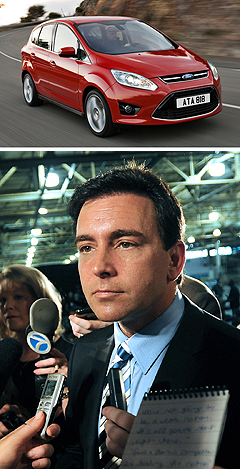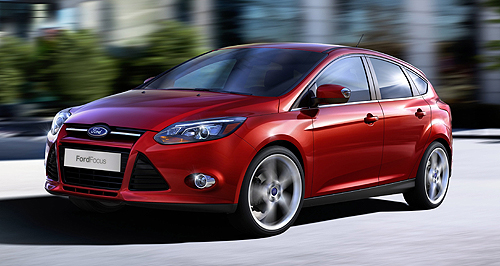News - FordFord gets set to short-circuit VoltIn Focus: Ford's new-generation Focus will benefit from hybrid battery and drivetrain investment in Detroit. Blue Oval takes out the cheque book for new-generation hybrid technology26 May 2010 DETROIT’S bid to transform itself from rust belt to green belt received a boost when Ford announced a $135 million ($A164m) investment to centralise development and production of key components for next-generation electric-hybrid vehicles in Michigan. Describing its home state as its “centre of excellence for vehicle electrification”, Ford said it would spend the money on engineering and building new battery packs and hybrid transaxles for new hybrid vehicles to go into production in the US by 2012. These will be preceded by full-electric versions of the new 2011 Ford Focus small car and Transit van, both of which will be launched across North America and Europe in the next 18 months. The Focus’s global C-car platform will also spawn a hybrid using the new technology to be developed in Michigan under Ford’s new development program that will create 220 new jobs, including 50 for electric vehicle engineers. A plug-in version of that hybrid vehicle will go head to head with General Motor’s Chevrolet Volt which is about to go into production in Detroit for US launch late this year.  Left: Ford C-Max. Below: Ford Americas president Mark Fields. Left: Ford C-Max. Below: Ford Americas president Mark Fields.Announcing the investment, Ford’s president of the Americas, Mark Fields, said electrified vehicles were a key part of the company’s plan to offer a full lineup of green vehicles. “We are building a centre of excellence in the US, here in Michigan, to keep Ford on the cutting edge,” he said. “Today’s announcement is another important step in our larger strategy to launch a family of hybrids, plug-in hybrids and full electric vehicles around the world.” Ford hopes that centralising its electric technology engineering and production in close proximity will drive both innovation and job growth. Production of battery packs – currently assembled in Mexico for Ford’s current-generation hybrids, including the hot-selling petrol-electric Escape – will be shifted to Ford’s Rawsonville plant in Ypsilanti, Michigan, while the Van Dyke transmission factory in the same state has won hybrid transaxle assembly from a Japanese company that has supplied Ford until now. Ford’s in-house team at Dearborn will design and engineer the lithium-ion battery systems for the hybrid vehicles to be built at Ford’s Michigan assembly plant in 2012. The global electrification strategy includes plans to launch five new full electric or hybrid vehicles in the compact, midsize and light commercial segments for the North American market by 2012 and European markets by 2013. The Transit Connect Electric will be launched in North America later this year and in Europe in 2011, followed by the Focus Electric in North America in 2011 and in Europe in 2012. A hybrid version of the luxury Lincoln MKZ will go on sale in the second half of this year, taking the battle up to Lexus hybrids. Hybrid, plug-in extender hybrid and full-electric vehicles based on Ford’s so-called C1 (Focus) small-car platform will appear from 2012. That same platform will also spawn hybrid and plug-in hybrid versions of Europe’s C-Max small people-mover from 2013. Ford first showed a prototype version of its Focus-based battery electric vehicle (BEV) at the Detroit motor show last year. As GoAuto has reported, the pure-electric, battery-powered Focus is being developed in partnership with supplier Magna International. The prototype employs a lithium-ion battery pack comprising seven modules of 12 lithium-ion cells, giving the vehicle 23kW/h. It can be charged from either a 220-volt or 110-volt power outlet, with respective charge times of six or 12 hours. The Focus BEV is claimed to have a range of more than 130km, although Ford and Magna were targeting a range of up to 160km for when the vehicle is introduced to the market. Ford has also said that in addition to Focus-size small cars and LCVs, it is working on electrification of Fusion-size C/D cars. In all its work thus far, the EV powertrain is employed in the existing structure of the vehicle platform, to keep costs down.  Read more |
Click to shareFord articlesResearch Ford Motor industry news |















Facebook Twitter Instagram